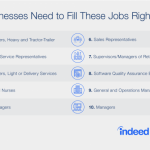
Over-the-top employee benefits like companies that pay for employees’ weddings get a lot of publicity, but what kinds of benefits are smaller companies really offering? The latest SHRM survey, which primarily polled smaller businesses, has some insights into what types of benefits are hot (and not).
According to the SHRM, the top three benefits employees say matter most to their job satisfaction are paid time off (63 percent), healthcare/medical benefits (62 percent) and flexibility to balance life and work issues (53 percent). Although benefits can be costly to offer—the report says they account for over 31 percent of the cost of employee compensation, on average—they are essential to attract and keep workers. The majority (60 percent) of companies in the survey say the number of benefits they offer hasn’t changed from last year, while one-third have increased benefits, continuing a trend from the prior year.
Hot Trends in Employee Job Benefits
Hot: Telecommuting
Not: Job sharing
Not: Job sharing
In the past 20 years, the number of companies offering telecommuting as a benefit has tripled, from 20 percent to 60 percent. Other benefits providing work-life balance—including flextime and compressed workweek—haven’t changed in popularity. Job sharing, however, dropped from 24 percent of companies offering it in 1996 to 10 percent this year.
Hot: Bonuses
Not: Raises
Not: Raises
Employees love raises, and it’s true that annual raises are an important part of most companies’ compensation plans. However, in the last five years, many businesses have shifted their focus to bonuses rather than raises as a way of controlling payroll costs. More than half of companies surveyed offer non-executive bonus plans. There have also been increases in the number of companies offering spot bonuses or signing bonuses for both execs and non-execs, and retention bonuses.
Hot: Wellness
Not: On-site Health Screening
Not: On-site Health Screening
Healthcare insurance is pretty much a given, with more than 95 percent of companies surveyed also offering dental insurance and prescription drug coverage. Some 87 percent provide vision insurance, while 85 percent offer mental health coverage. Wellness benefits are growing in popularity, now offered by 72 percent of companies compared with 54 percent in 1996. The most common wellness benefits are wellness resources and information, wellness programs and on-site flu vaccinations. Declining in popularity: on-site health screenings for things like high cholesterol or glucose testing. Another growing trend: about one-fourth of companies now offer healthcare services, such as diagnosis and treatment recommendations, by phone or videoconference.
Hot: Paid time off
Not: Sabbaticals
Not: Sabbaticals
Nearly all companies (97 percent) either provide paid vacation leave or paid time off plans that combine vacation time, sick time and personal time. In addition, 97 percent offer paid holidays. Less popular: Just 26 percent provide paid maternity leave beyond what state law or short-term disability benefits mandate, and 21 percent offer paid paternity leave. Unpaid sabbaticals dropped in popularity, offered by just 12 percent of companies, down from 27 percent in 1996.
Hot: Families
Family-friendly benefits are on the rise. Nearly four out of 10 companies have an on-site lactation/mother’s room, one-fourth let employees bring their children to work in an emergency, and one-fourth provide benefits other than health insurance to same-or opposite-sex domestic partners.
Hot: Retirement Plans
Retirement benefits remain pretty much unchanged in the past 20 years. Nine out of 10 companies have a 401(k) or similar defined contribution retirement plan; of those, 74 percent offer an employer match. There has been an increase in the number of companies offering a Roth 401(k) plan in the past few years.
What’s new?
New benefits measured in the survey for the first time this year include executive coaching (offered by 16 percent of companies), a stipend or subsidy for using employee-owned technological devices for work (12 percent) and automatically enrolling employees into a defined contribution retirement savings plan (21 percent).
What’s the takeaway for your business?
• You need good benefits to be competitive. Overall, the survey reports, the percentage of company offering basics such as health insurance and retirement plans has not changed substantially in the past 20 years.
• Flexible work arrangements are especially valuable in attracting Millennial and 55+ year old employees, two extremely desirable groups for most businesses.
• A good wellness program can help cut the cost of healthcare benefits, which is typically the most expensive component of any benefits program.
• Providing career development benefits not only attracts and retains employees, but can also help your business build the skills you need your staff to have. Almost nine out of 10 companies surveyed now pay employees’ professional membership dues, up from 65 percent in 1996.
[“source-ndtv”]




